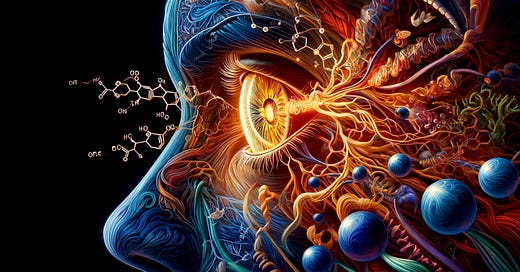Chromophores & Light-Absorbing Compounds
Every aspect of the body evolved to sense and use the sun's light
Within the human body, chromophores and light-absorping compounds are found in various biomolecules that play crucial roles in biological processes.
Here are some of these key chromophores and light-absorbing compounds, that by their very existence, disprove the ‘sunlight bad’ narrative.
1. Hemoglobin: The heme group in hemoglobin contains an iron atom within a porphyrin ring, which absorbs light and gives blood its red color.
2. Melanin: A polymer found in the skin, hair, and eyes that provides coloration and protection against UV radiation.
3. Retinal: A derivative of vitamin A that is a key component of the visual pigments in the retina, crucial for vision.
4. Bilirubin: A breakdown product of hemoglobin that gives a yellow color to bruises and jaundice.
5. Cytochromes: Proteins involved in electron transport and cellular respiration, containing heme groups that absorb light.
6. Flavins: Found in flavoproteins, these are involved in various biochemical processes and have light-absor…






